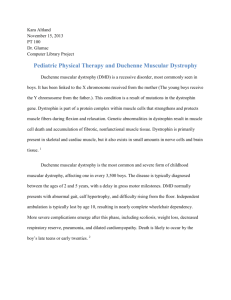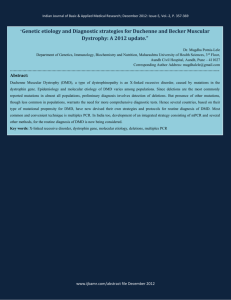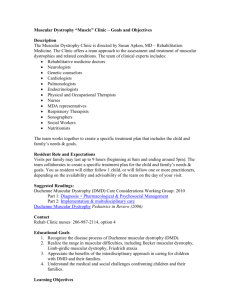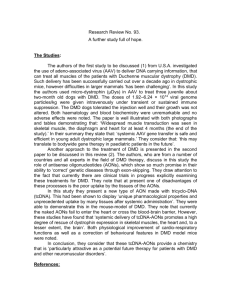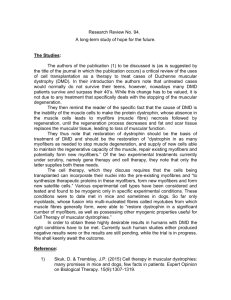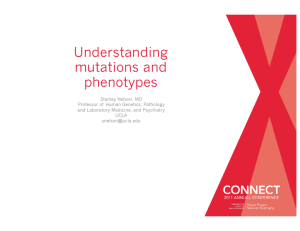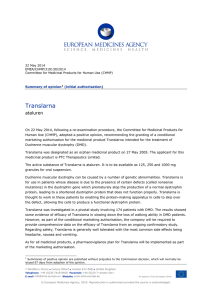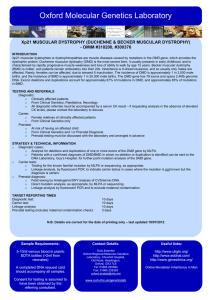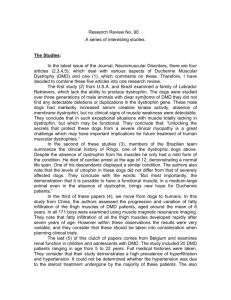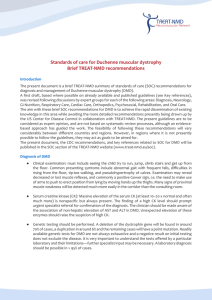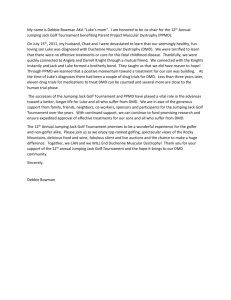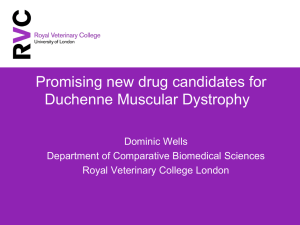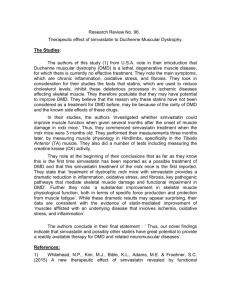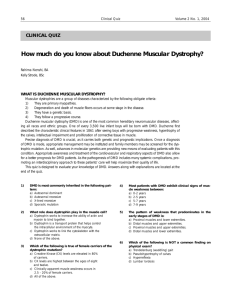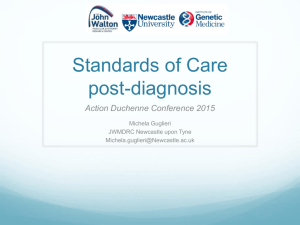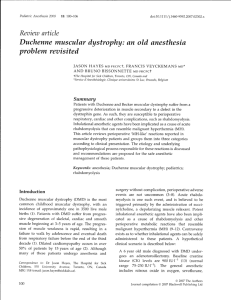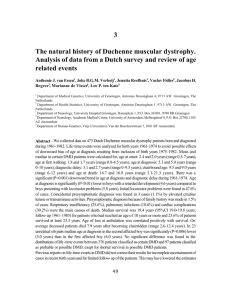DUCHENNE MUSCULAR DYSTROPHY
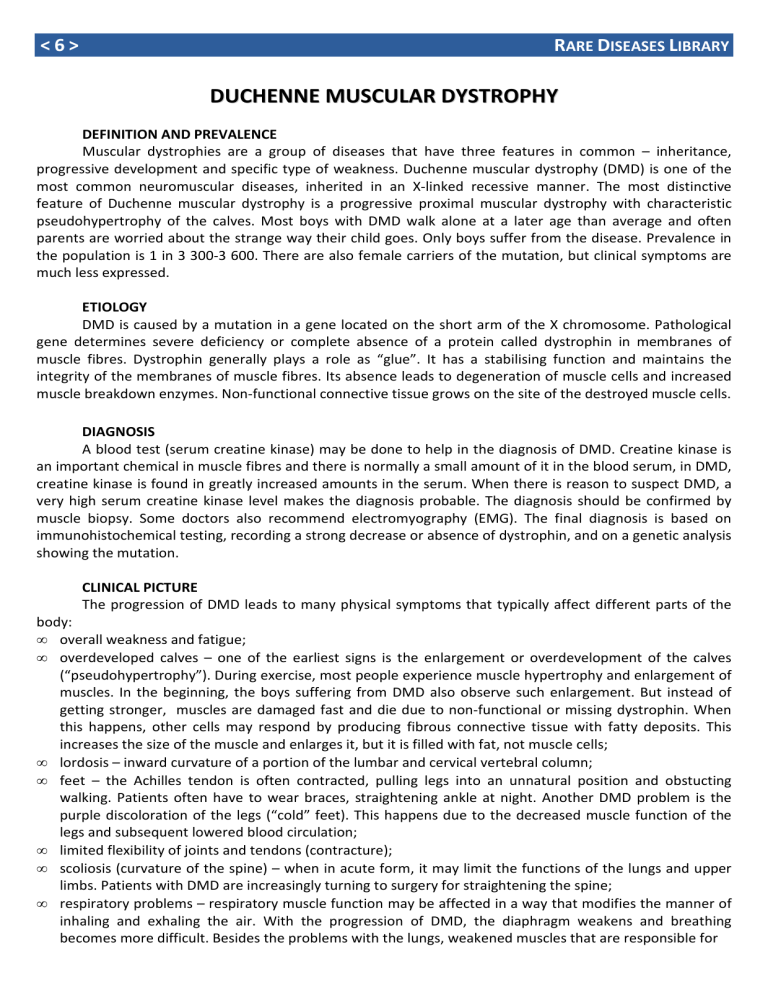
< 6 > R
ARE
D
ISEASES
L
IBRARY
D U C H E N N E M U S C U L L A R D Y S T R O P H Y
DEFINITION AND PREVALENCE
Muscular dystrophies are a group of diseases that have three features in common – inheritance, progressive development and specific type of weakness. Duchenne muscular dystrophy (DMD) is one of the most common neuromuscular diseases, inherited in an X-linked recessive manner. The most distinctive feature of Duchenne muscular dystrophy is a progressive proximal muscular dystrophy with characteristic pseudohypertrophy of the calves. Most boys with DMD walk alone at a later age than average and often parents are worried about the strange way their child goes. Only boys suffer from the disease. Prevalence in the population is 1 in 3 300-3 600. There are also female carriers of the mutation, but clinical symptoms are much less expressed.
ETIOLOGY
DMD is caused by a mutation in a gene located on the short arm of the X chromosome. Pathological gene determines severe deficiency or complete absence of a protein called dystrophin in membranes of muscle fibres. Dystrophin generally plays a role as “glue”. It has a stabilising function and maintains the integrity of the membranes of muscle fibres. Its absence leads to degeneration of muscle cells and increased muscle breakdown enzymes. Non-functional connective tissue grows on the site of the destroyed muscle cells.
DIAGNOSIS
A blood test (serum creatine kinase) may be done to help in the diagnosis of DMD. Creatine kinase is an important chemical in muscle fibres and there is normally a small amount of it in the blood serum, in DMD, creatine kinase is found in greatly increased amounts in the serum. When there is reason to suspect DMD, a very high serum creatine kinase level makes the diagnosis probable. The diagnosis should be confirmed by muscle biopsy. Some doctors also recommend electromyography (EMG). The final diagnosis is based on immunohistochemical testing, recording a strong decrease or absence of dystrophin, and on a genetic analysis showing the mutation.
CLINICAL PICTURE
The progression of DMD leads to many physical symptoms that typically affect different parts of the body:
• overall weakness and fatigue;
• overdeveloped calves – one of the earliest signs is the enlargement or overdevelopment of the calves
(“pseudohypertrophy”). During exercise, most people experience muscle hypertrophy and enlargement of muscles. In the beginning, the boys suffering from DMD also observe such enlargement. But instead of getting stronger, muscles are damaged fast and die due to non-functional or missing dystrophin. When this happens, other cells may respond by producing fibrous connective tissue with fatty deposits. This increases the size of the muscle and enlarges it, but it is filled with fat, not muscle cells;
• lordosis – inward curvature of a portion of the lumbar and cervical vertebral column;
• feet – the Achilles tendon is often contracted, pulling legs into an unnatural position and obstucting walking. Patients often have to wear braces, straightening ankle at night. Another DMD problem is the purple discoloration of the legs (“cold” feet). This happens due to the decreased muscle function of the legs and subsequent lowered blood circulation;
• limited flexibility of joints and tendons (contracture);
• scoliosis (curvature of the spine) – when in acute form, it may limit the functions of the lungs and upper limbs. Patients with DMD are increasingly turning to surgery for straightening the spine;
• respiratory problems – respiratory muscle function may be affected in a way that modifies the manner of inhaling and exhaling the air. With the progression of DMD, the diaphragm weakens and breathing becomes more difficult. Besides the problems with the lungs, weakened muscles that are responsible for
R
ARE
D
ISEASES
L
IBRARY
< 7 > coughing can allow bacteria and viruses in the lungs to grow, since coughing represents a normal defense that lungs use to clear excess mucus. Thus, a common cold could quickly develop into pneumonia in young men with DMD.
TREATMENT
At present there is no generally accepted treatment for the disease. Treatment is symptomatic by nature and aims to manage the problems that have already occurred. Myoblast transfer therapy and gene replacement with dystrophin minigenes are currently being investigated, however it is all at experimental level. Progressive development can be delayed by the application of physiotherapy. Patients are recommended high-protein diet and vitamin E intake.
REHABILITATION AND FOLLOW-UP CARE
Appropriate individual rehabilitation programme has a proven effect in managing the symptoms of
DMD. Patients with DMD experience difficulties in many everyday activities. This is a direct result of reduced mobility and stability of posture, progressive deterioration of function of the upper limbs, and contractures.
Specialists in physical and occupational therapy can help in dealing with these symptoms, using different methods.
Efforts and attention should be mainly aimed at the care of muscle extensibility and joint contractures.
Medical specialists prepare a stretching programme which can be easily performed in a family environment too. It is important to maintain a good range of motion and symmetry in each joint. This helps to maintain the best possible function and prevent the development of fixed distortions. Effective management of contractures may also require the use of assistive devices for stretching, splinting and maintaining the posture. Night splints (ankle-foot orthoses) are used to help control contractures at ankles and longer leg braces (knee-ankle-foot orthoses) are useful at the stage when walking becomes very difficult or impossible.
In some cases, surgery is recommended to extend the period of free walking.
The work with the patient’s relatives should not be underestimated working. They have to be actively involved in all aspects of the rehabilitation programme. The family plays a vital role in supporting the patient and his subsequent reintegration into society.
Bibliography
1.
Duchenne muscular dystrophy: MedlinePlus Medical Encyclopedia.
2.
Anderson LVB, BushbyKMD. Of DMD Muscular Dystrophy:
Methods and Protocols (Methods in Molecular Medicine). Totowa,
NJ: Humana Press. p. 111, 2001
3.
Duchenne and Becker muscular dystrophy, National Institutes of health
4.
Bushby K, Finkel R, Birnkrant DJ, et al. Diagnosis and management of Duchenne muscular dystrophy, part 1: diagnosis, and pharmacological and psychosocial management. Lancet Neurol.
2010 Jan;9(1):77-93.
MEDICAL CENTRE “RAREDIS”
REHABILITATION AND TRAINING OF
5.
Bushby K, Finkel R, Birnkrant DJ, et al. Diagnosis and management of Duchenne muscular dystrophy, part 2: implementation of multidisciplinary care. Lancet Neurol 2010; 9: 177–89.
6.
Sejerson T, Bushby K, TREAT-NMD EU Network of
Excellence.Standards of care for Duchenne muscular dystrophy: brief TREAT-NMD recommendations. Adv Exp Med Biol.
2009;652:13-21.
7.
TREAT-NMD Network http://www.treat-nmd.eu/
8.
CARE-NMD Project http://en.care-nmd.eu/
PEOPLE WITH RARE DISEASES AND THEIR FAMILIES
E-mail: medical@raredis.org
Address: 24 Landos Street, floor 1
4000 Plovdiv, Bulgaria
Phone: +359 32 577 447
Website: www.medical.raredis.org

